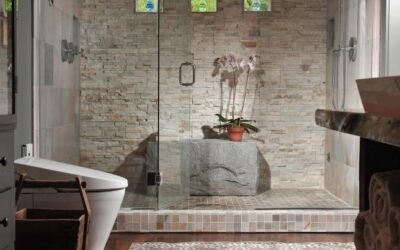Protecting the Most Used Appliance In Your Home

We suspect that most homeowners the Upper Valley have spent more time in front of their kitchen sinks in the past year than they could have ever imagined. Kohler claims that the average person uses their kitchen sink between 10 and 12 times a day. When families are working and schooling from home, that number is probably quite low. With kitchen sinks getting so much attention, it pays to provide a little attention in return for several good reason.
First, the kitchen sink and faucet are the most used appliances in the home. For many homeowners the Upper Valley their kitchen sinks remain in place for 20 or more years. One reason for their longevity is they are difficult and can be expensive to replace. That’s another reason why homeowners the Upper Valley should invest in a high-quality kitchen sink when they renovate their new kitchens not only to achieve the look and feel that you want but also to obtain the functionality that you desire.
Tips to Maintain Your Kitchen Sink
- Rinse the kitchen sink daily to eliminate food debris and deter the possibility of bacteria growth.
- Wipe the sink and kitchen faucet daily with a soft cloth to prevent grime and mineral build up.
- Every 10 days thoroughly clean your sink using dish soap and water. Do not use steel wool, Comet, Soft Scrub or other harsh cleansers that can scratch or damage the finish.
- Use a tooth brush or other small brush to clean around the faucet and seams where the sink meets the counter.
If you know who manufactured your kitchen sink, visit the website for additional guidance for maintaining it. Additionally, different sink materials require different care as follows:
Ceramic and Vitreous China
Ceramic and Vitreous China fixtures have a durable glossy or matte color glaze.
- To clean, use a mild liquid nonabrasive detergent such as dish washing liquid.
- NEVER use abrasive or harsh chemical cleaners or abrasive pads because they will remove the gloss or matte finish.
- Avoid using a mild abrasive cleaner like Soft Scrub on a regular basis.
Ceramic Weather Glazes
These special ceramic glazes are created from organic materials; no two are exactly alike. Weathered finishes are designed to change over time and vary in appearance creating a “living finish.” Crazing and darkening is normal, creating part of the product’s intrinsic natural beauty.
- To clean, use a mild liquid nonabrasive detergent such as dish washing liquid and dry fixture with a clean soft cloth.
- Never use abrasive pads, chlorine or any type of harsh chemicals.
Fireclay Sinks
Fireclay is very durable because of its high
firing temperature.
- To clean, use a nonabrasive cleaner and sponge.
- Stubborn stains can be removed with a mild abrasive cleaner such as Soft Scrub on a wet sponge.
- NEVER use abrasive pads, chlorine or any type of harsh chemicals.
Granite Polymers and Silicate
Quartz Polymers
These polymers form a hard, nonporous material resistant to chipping, scratching and staining. Granite polymers and silicate quartz polymers can withstand heat up to 446°F. Placing a pot from the stove directly in sinks made from these materials will not harm the surface.
- Rinse and wipe the sink dry with a clean soft cloth after each use to eliminate water spots, stubborn stains, soap film build-up.
- A solution of 50 percent bleach and water can be used to treat tough or stubborn stains. Let the solution sit in the bottom of the sink for one hour, then scrub and rinse well.
- Do not use abrasive cleaning agents, steel wool or scouring pads.
- NEVER use straight bleach, ammonia or caustic soda solutions.
- NEVER use drain cleaning chemicals when the sink is filled with water.
- To protect the bottom of the sink, purchase a customized sink grid.
Porcelain Enamel
Porcelain enamel is a hard, glass-like paint applied in heavy layers and “baked on” under high temperatures. It is used on cast iron, steel and plastic tubs, kitchen sinks, bar sinks and bathroom vanity bowls.
- To clean, use a soft cloth or sponge with a mild nonabrasive cleaner.
- Purchase a grid for the bottom of the kitchen sink to help minimize scratching.
- Do not allow coffee or tea to stand in the bottom of the sink because that could cause stains.
- NEVER use abrasive cleaners or scouring pads. This will dull the gloss and eventually wear to the base material.
- Never use chlorine bleach or any other type of harsh chemical.
Terrazzo Sinks
Terrazzo is a highly versatile building material used in flooring, walls, countertops and other indoor and outdoor applications. Terrazzo can be either poured in place or set with precast. It consists of marble, quartz, granite or glass chips combined with either an epoxy or cementitious binder.
- Clean stains immediately because they are more difficult to remove the longer they set.
- To remove grease, use a solvent such as carbon tetrachloride.
- Treat stains with bleaches such as household ammonia, hydrogen peroxide or lemon juices which discolorstains.
- Terrazzo does not need protection from wear, it needs protection from absorption and this is achieved through the use of a penetrating sealer.
Cast Iron Sinks
- Periodically clean cast iron with a soft abrasive cleaner such as Soft Scrub.
- For stubborn stains, use a soft nylon scrubber.
- Do NOT use steel wool, metal brushes, scrapers or abrasive sponge pads.
To protect the bottom of your sink and your dishes, invest in a basin rack. They are superior to a rubber mat, which is more likely to be a breeding ground for bacteria.
How can you better use and maintain your sink and other fixtures in your kitchen? Give us a call at 603-448-9700 or make an appointment to visit us either in person or virtually at our showroom located at 105 Hanover Street, Lebanon, NH.


